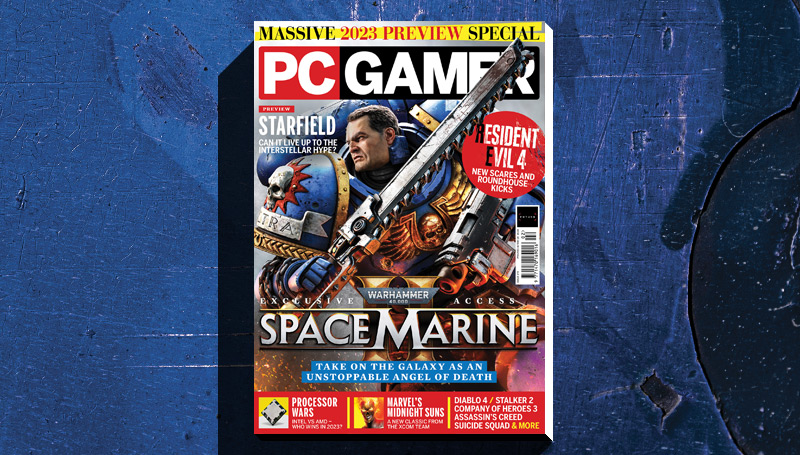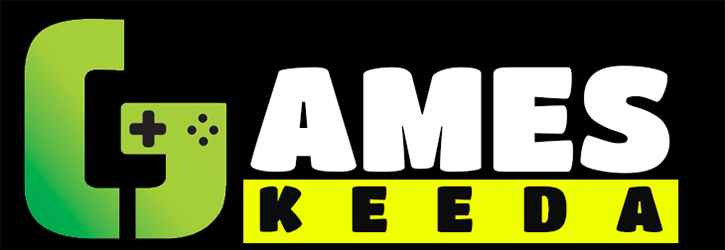DNA TRACING
(Picture credit score: Future)
This text first appeared in PC Gamer journal challenge 379 in January 2023, as a part of our DNA Tracing collection, the place each month we delve into the lineages behind iconic video games and studios.
The time period ‘wanting glass’ readily brings to thoughts warped fantasy worlds: Alice in Wonderland, twisted smiles and a way of not fairly understanding what you are stepping into. As an organization splash display, it felt a becoming intro to Thief—with its Tweedledum guards and servants of the Trickster, minions of chaos and nature who communicated in a sort of rhyming babyspeak (“Name the darkish! Name the black! Bringsie forth I name it again!”). Thief’s first stage definitely takes you down a rabbit gap of types: first into the sewers, to floor throughout the grounds of a manor, then down a nicely, to lastly emerge among the many rat poison and beer barrels of Lord Bafford’s basement.
But check out the emblem of Trying Glass Studios from the time, and you may see a telescopic eyeglass—the identical unusual steampunk system fitted into the appropriate socket of Thief protagonist Garrett, after his personal orb was plucked out in some primordial Trickster ritual. And that specific ‘wanting glass’ took place due to cutscene author Terri Brosius.
“I am taking a threat right here,” she recalled considering, in dialog with MIT’s GAMBIT Sport Lab in 2012. “I am writing about anyone taking a watch out whereas chanting some verse. Now I’ve to attend for 3 days earlier than I get to listen to again whether or not I am fired.”
Terri, together with Eric Brosius and Greg LoPiccolo, had come to Trying Glass simply as their musical careers had begun to falter. The trio had performed in a preferred Boston band, the Pixies-esque Tribe. However, discovering that their enchantment did not lengthen far exterior the New England space, they progressively migrated to Trying Glass – Terri contributing bizarre fiction and turning into the voice of the AI antagonist Shodan in System Shock, whereas Eric and LoPiccolo wrote soundtracks and helped form the studio’s minimalist strategy to sound design. A lot of Thief’s atmosphere was made up of four-second, looping drones—single held notes quite than a dramatic musical rating.
“Much less is extra,” Eric Brosius informed GAMBIT. “I discovered that it virtually hypnotised you and sucked you into what you had been doing, and made you very conscious of stuff round you, due to the simplicity of what you had been listening to. We had been keenly conscious that this is able to be the primary stealth sport that may actually depend on audio cues.”
By the tip of Thief’s improvement, LoPiccolo had risen to the function of venture lead— appropriately, since Thief centred sound as a mechanic in a approach few first-person video games have managed, earlier than or since. Gamers needed to pay attention for mumbling or whistling to find out the situation of close by guards—and take care to keep away from marble flooring the place doable, for worry of alerting these guards in flip. After launch, Thief followers would playfully rib Trying Glass for Garrett’s ‘faucet footwear’, so noisy had been his footsteps.
(Picture credit score: Sq. Enix)
(opens in new tab)
A few of Thief’s earliest design ideas, nonetheless, got here from Ken Levine. The long run BioShock designer’s first video games trade job was at Trying Glass, the place he labored alongside Doug Church to invent worlds for the corporate’s subsequent motion RPG. His rejected concepts included Faculty for Wizards, Darkish Elves Should Die and Higher Crimson Than Undead – the latter a Fifties pulp story a couple of CIA agent combating communists in Russia throughout a zombie outbreak. The seeds for Thief, nonetheless, got here from Darkish Camelot—a retelling of Arthurian legend in which you’d play a black-skinned Mordred, and wherein King Arthur could be a villainous nobleman responsible of racial prejudice (a theme Levine would finally return to in BioShock Infinite).
Whereas the swordfighting and medieval fantasy transferred to Thief, virtually every little thing else modified as studio founder Paul Neurath landed on the theme of housebreaking. “Trying Glass audio was to date forward of every little thing else,” Levine informed GAMBIT. “It was such a strong software, and we actually wished to take advantage of that.”
On the time, there was no such factor because the stealth style—by unusual coincidence, Thief and Steel Gear Strong would launch virtually on prime of one another. And so Levine drew inspiration from submarine video games like Silent Hunter—particularly “how highly effective you had been while you had been unseen, and the way weak you had been while you had been noticed.”
(Picture credit score: Trying Glass Studios)
(opens in new tab)
“I began writing paperwork about thermocline layers,” Levine remembered. “Submarines will undergo these as a result of they type a barrier to sonar. I began enthusiastic about how we might construct a terrain that is primarily based upon sound.” Both Church or lead programmer Tom Leonard got here up with the thought of utilizing lightmaps within the stage to point how hidden the participant was, including a visible dimension to Levine’s premise.
Quickly afterwards Levine left the corporate, alongside Jon Chey and Rob Fermier, to arrange Irrational Video games. However they did not go far: Trying Glass incubated the brand new studio all through its first venture, System Shock 2—offering tech assist on the Thief engine, and naturally, sound design. That signature eerie drone is current on the Von Braun, an area station populated by useless our bodies and audio logs.
(Picture credit score: Sq. Enix)
(opens in new tab)
The absence of residing NPCs was a design principle Trying Glass had selected years prior – having made two RPGs within the Ultima universe and grown bored with the restrictions of textual content conversations. The useless, they figured, would draw much less consideration to the boundaries of their in any other case cleverly simulated worlds. Thief’s drunken guards had been an extension of the identical concept—although alive, chatting with them was out of the query. Your job was to remain out of their approach. It is this fictional coherence that makes Trying Glass video games so beloved to today.
System Shock 2 would show to be a passing of the torch: Trying Glass went out of enterprise the 12 months after its launch, leaving Irrational to revive the components with BioShock. The Austin workplace that Trying Glass had closed after the Thief staff turned the Deus Ex staff. And the previous members of Tribe went on to guide improvement of Guitar Hero at Harmonix, bringing the Boston music scene to a global viewers in spite of everything. Trying Glass could also be lengthy useless, however as System Shock as soon as proved, there’s a lot the useless can nonetheless educate us.



